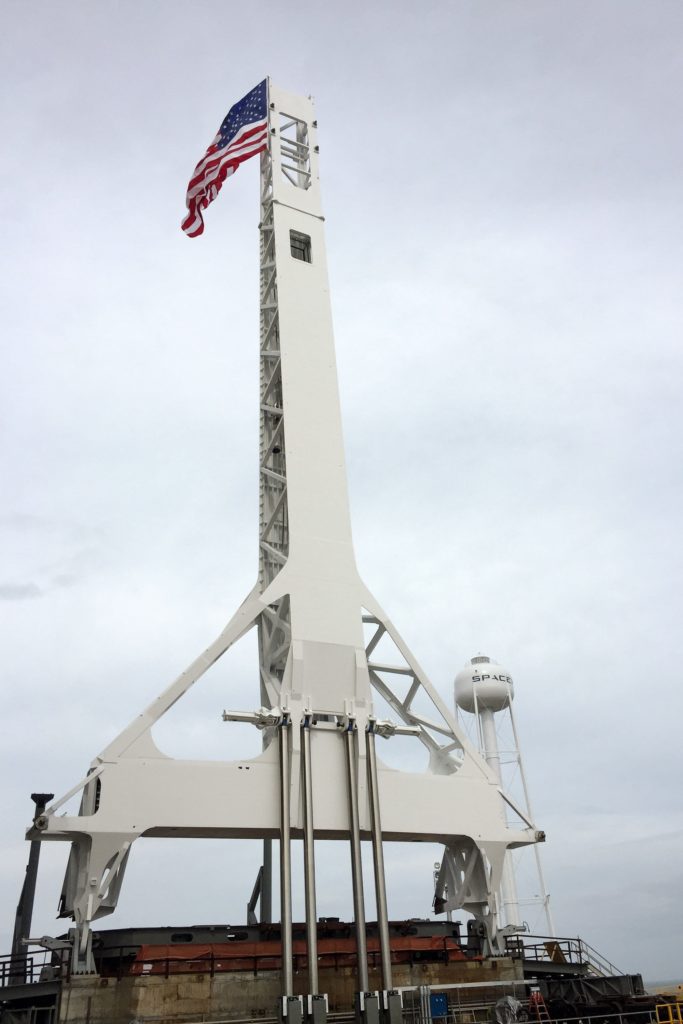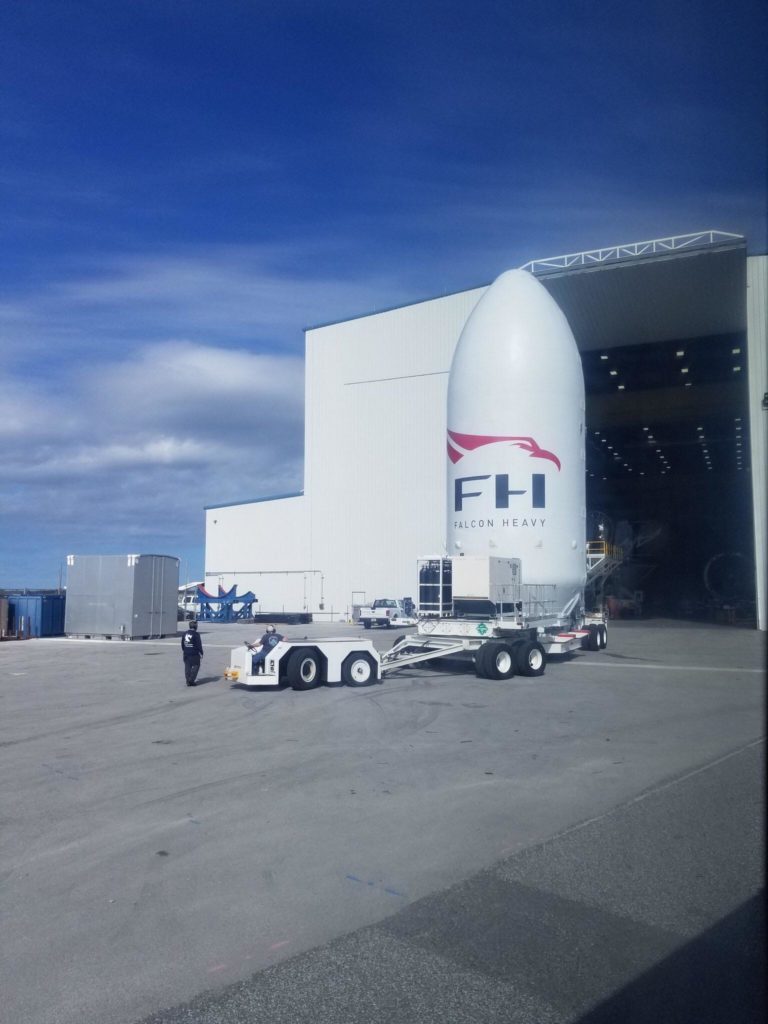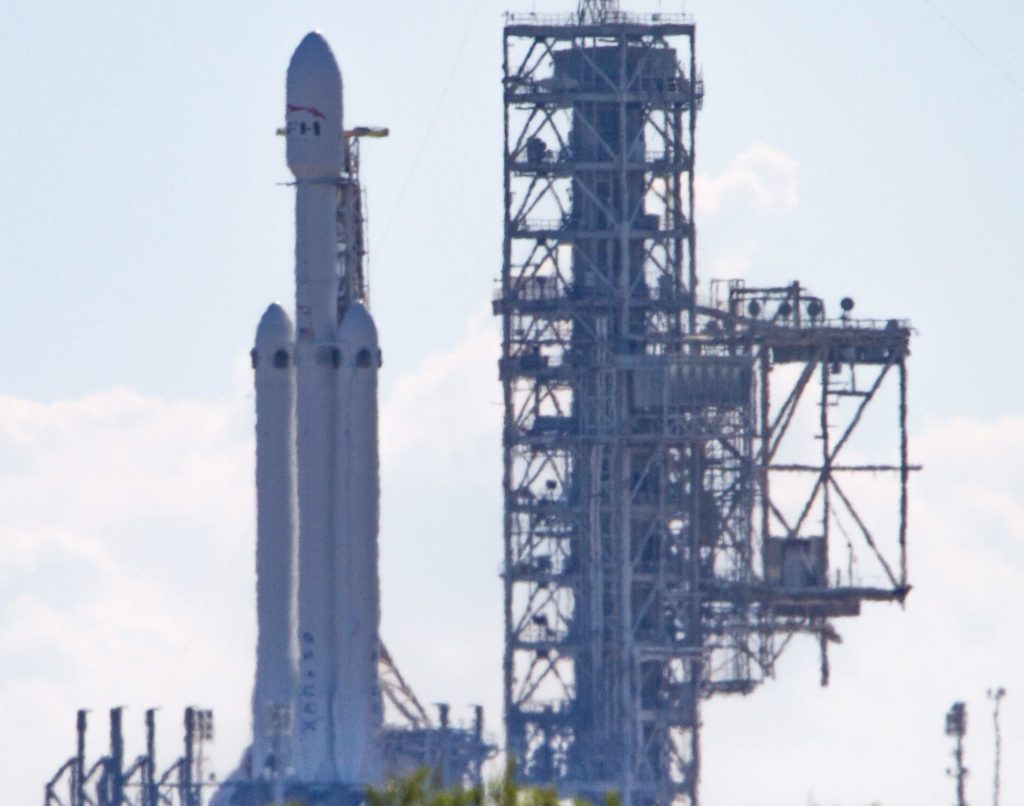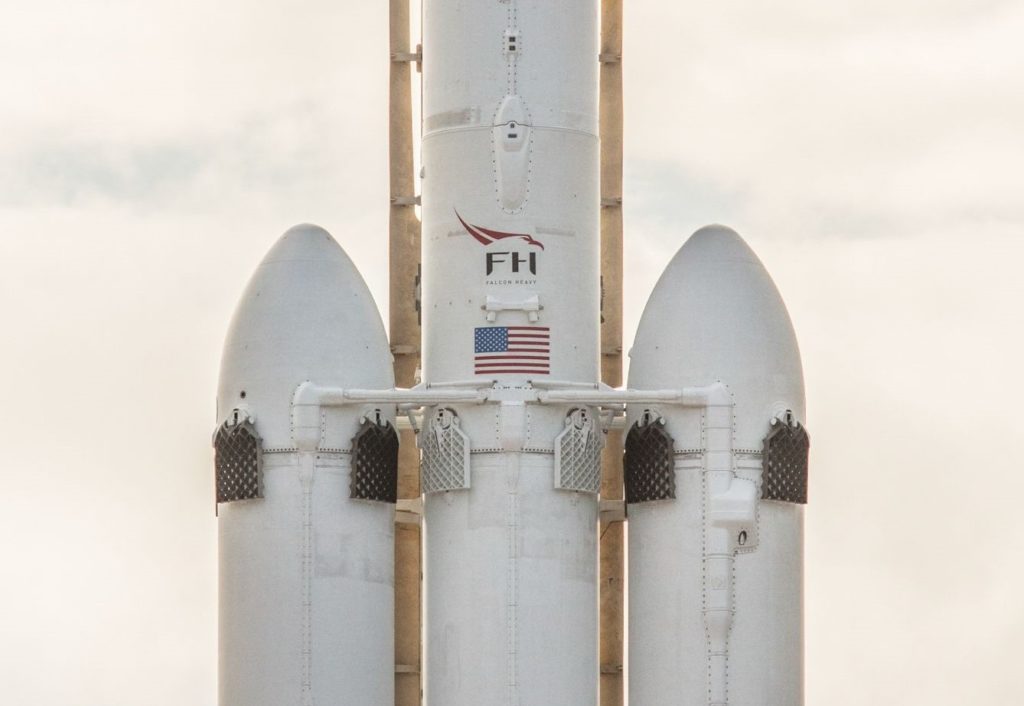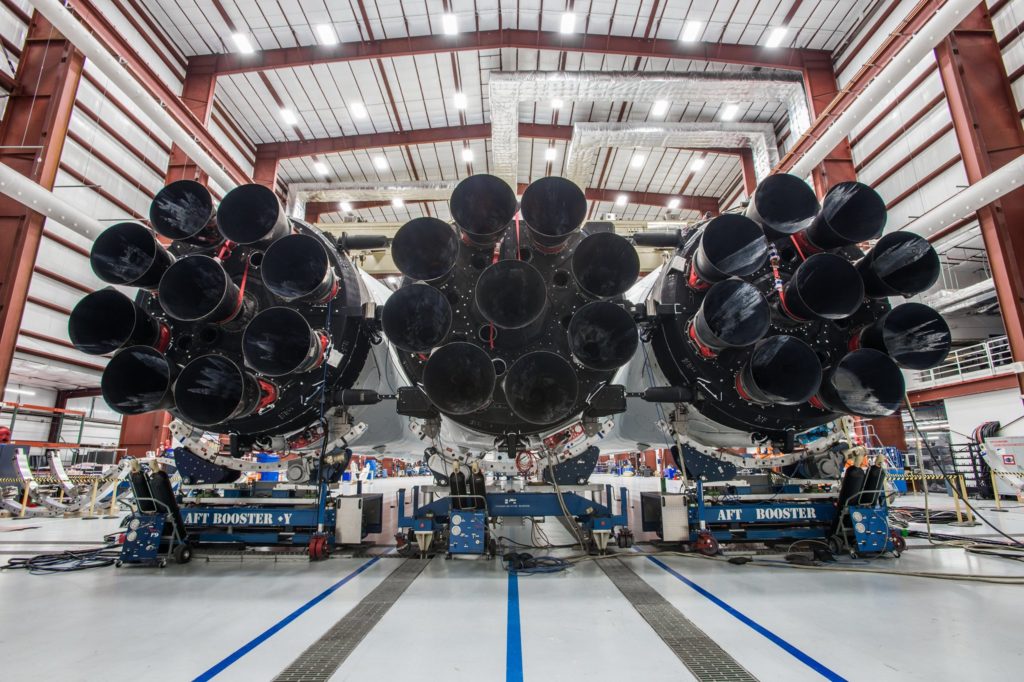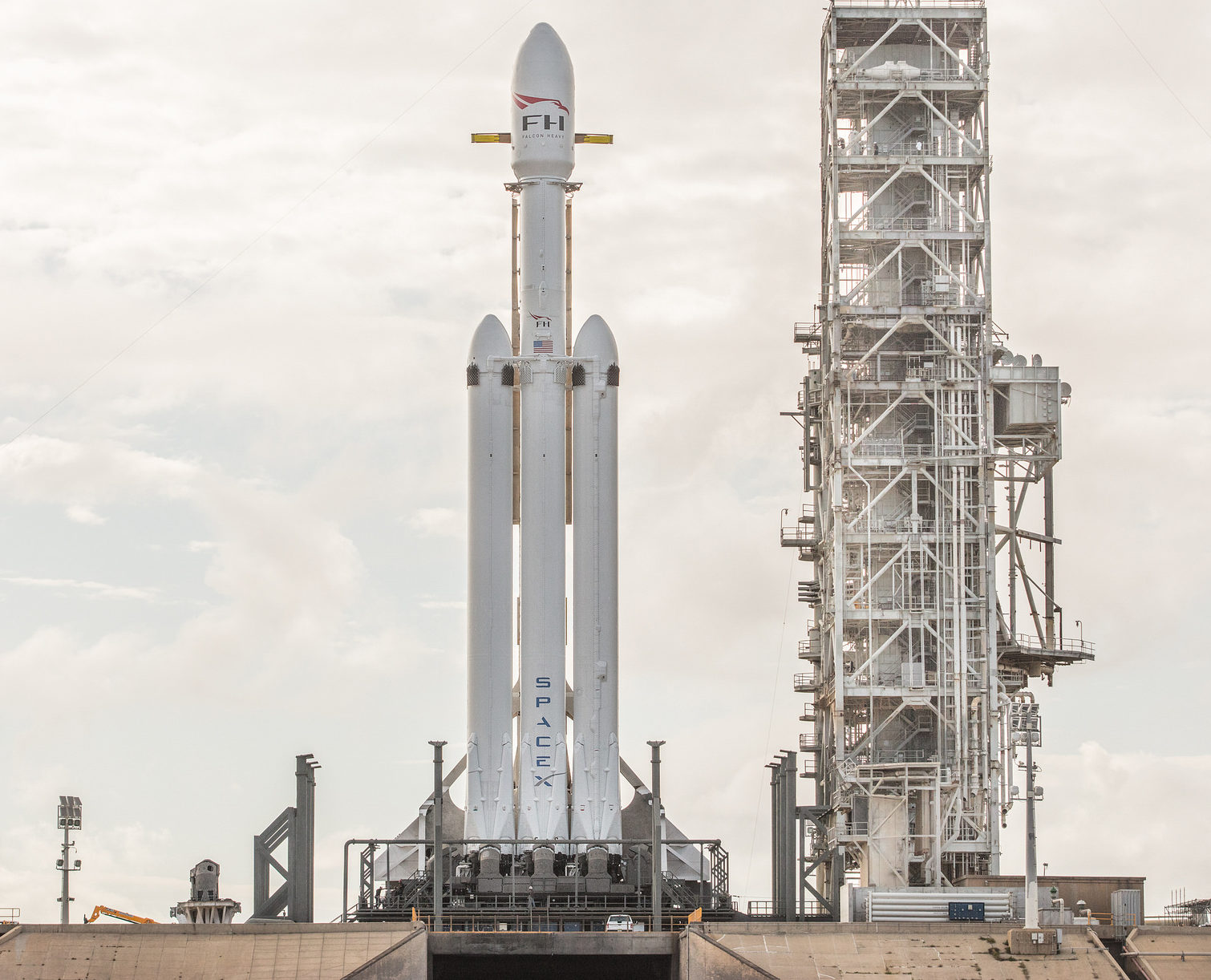
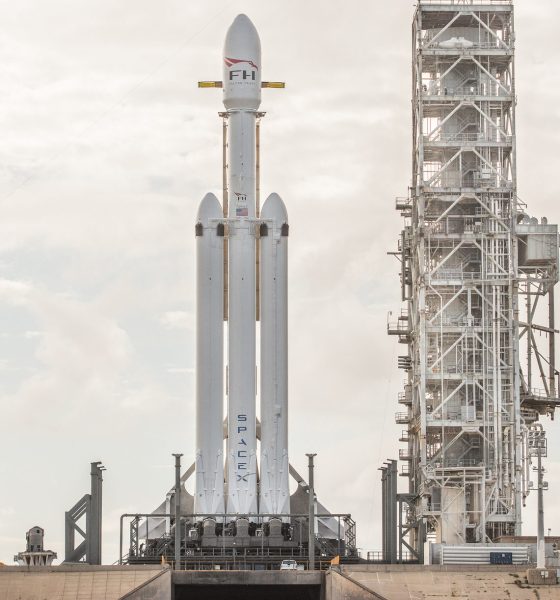
News
SpaceX gets ready to fire up Falcon Heavy for the first time at Cape Canaveral
As it gradually nears a launch date sometime in late January or early February, SpaceX’s new super-heavy launch vehicle (SHLV) Falcon Heavy has weathered a number of schedule delays in preparation for a historic and crucial moment – its first static fire/test ignition that’s currently scheduled for Tuesday, January 16, beginning at 4pm EST (2100 GMT).
Those focused on the gritty details of SpaceX’s prelaunch procedures will have immediately noted how different Falcon Heavy’s operations are when compared with SpaceX’s workhorse rocket and Heavy’s progenitor, Falcon 9. For a typical launch of Falcon 9, the rocket and payload will normally arrive at the given launch pad around a month or so before the anticipated launch date. Next, the satellite payload is encapsulated inside Falcon 9’s payload fairing, typically two or so weeks before launch. Pad facilities would be thoroughly examined after the previous launch to remedy any wear and tear and ensure that it is in good working order ahead of the next mission. Approximately a week before launch, Falcon 9’s first and second stages are mated together inside the pad’s integration facilities, the pad’s Transport/Erector/Launcher (TEL) is rolled into the integration facilities, and the Falcon 9 booster and second stage (sans payload) are mounted onto the TEL. Finally, the TEL and rocket are rolled out to the launch pad for a brief 3-5 second static fire around 5-7 days before launch. After testing is completed, the TEL is rolled back to the integration facilities, the payload fairing and payload are attached to the rocket, and the whole stack is once more rolled back to the pad, ready for launch.
- The TEL seen at LC-39A in early 2017. (SpaceX)
- The base of the TEL now sports multiple additional launch clamps (large grey protrusions) that will be needed for Falcon Heavy’s three first stage cores. (SpaceX)
- Finally, the fairing is transported vertically to the HIF, where it can be flipped horizontal and attached to its rocket. (Reddit /u/St-Jed-of-Calumet)
For a used booster, this is the sum total of the prelaunch procedures it will go through at the pad, after recovery and refurbishment. For all new boosters, however, SpaceX currently conducts a thorough slate of tests for all Merlin 1D and MVac (2nd stage) rocket engines, as well as both the integrated first and second stages at its McGregor, Texas facilities. These tests last far longer than those conducted at the launch pad, and typically run for the full length of a launch in order to better simulate the stresses flight hardware will end up experiencing. In other words, new Falcon 9 hardware always has to make it through hundreds of seconds of live firing and post-test analysis before finally being shipped to SpaceX’s launch facilities, where it conducts the aforementioned brief static fire at the pad.
A whole new bird of prey
To put it simply, Falcon Heavy is a whole different animal when it comes to prelaunch testing. Due to the rocket’s sheer size and power in its fully integrated state, McGregor simply does not have the capability to conduct the same tests it does with Falcon 9. While two of the first Heavy’s three first stage boosters are modified flight-proven Falcon 9s (from Thaicom-8 and CRS-9), the center core required a far more extensive suite of changes from a normal Falcon 9 in order to survive the added stresses it would experience during a Falcon Heavy launch. Although the full-up vehicle could not be tested in Texas with a full-length firing, each of its three first stages and upper stage went through the same tests as a normal Falcon 9. Before that, both side core and center core structural test articles (STA) went through a large amount of mechanical stress testing to verify that Falcon Heavy’s re-engineered design would be able to easily survive the stresses of launch and then some. In short, months and months of work have gone into the hardware that both preceded and makes up the Falcon Heavy rocket currently vertical and weeks from launch at Kennedy Space Center.
However, SpaceX has learned the hard way that simulation and partial physical testing can only go so far, and cannot be completely trusted when it comes to flying new hardware, as evidenced by the both Falcon 1 and the company’s several first attempts at recovering a Falcon 9 booster (intact, at least…). Even the best and most brilliant engineers and technicians can only do so much without testing the real thing in real conditions, something that can often result in unintended failures – especially the case with new technologies. Falcon Heavy is indeed a new technology to some extent or at least incorporates numerous new technologies that SpaceX has little to no operational experience with. These and relatively untried aspects include the simultaneous ignition and operation of twenty seven already powerful Merlin 1D engines, new stresses on the center booster during launch, a unique non-explosive side booster separation mechanism, the also near-simultaneous recovery of three first stages, and a second stage tasked with placing an unusual payload in the highest orbit SpaceX has yet to attempt.
Hence Elon Musk’s aggressive expectation maintenance over the last year or so, in which he spared no punches while imparting upon several audiences the likelihood that Falcon Heavy’s first launch would fail entirely, and maybe even destroy the launch pad. In reality, SpaceX is clearly doing everything in their power to ensure that the massive rocket’s first launch is a total success.
- Falcon Heavy vertical at Pad 39A on Thursday, January 11. After a successful rehearsal, the static fire was scrubbed due to a small hardware bug. (Tom Cross/Teslarati)
- The white bars in this photo are half of Falcon Heavy’s seperation mechanism. A number of actuators take the place of the more common solid rocket motors used with vehicles like the Delta IV Heavy. (SpaceX)
- Falcon Heavy’s three boosters and 27 Merlin 1D engines on full display. (SpaceX)
What’s next for Falcon Heavy?
Recent delays to the vehicle’s first static fire test at SpaceX’s Launch Complex 39A are strong examples of this cautious approach. While fans and outsiders alike may be nipping at the bit for the vehicle’s long-awaited inaugural static fire and launch, SpaceX clearly is laser-focused on very thoroughly testing the vehicle and is exerting great caution. After the first static fire attempt was delayed, reportedly due to a buggy launch clamp, SpaceX had nevertheless completed its first (presumably successful) wet dress rehearsal (WDR), which saw the vehicle prepared for launch with a full load of propellant and other miscellaneous fluids. After a brief period back horizontal at the pad, likely to repair whatever fault initially caused the delay, Falcon Heavy has been vertical at the pad for the last several days. Intriguingly, albeit unsurprisingly, tank venting was reported early Sunday by local observers. This indicates that SpaceX conducted at least one additional wet dress rehearsal with Falcon Heavy, likely both contributing to an additional delay of the replacement static fire date (Monday) and solidifying confidence in the new test date, Tuesday, January 16.
Compared with the results of the first WDR (a three-day delay), the one day delay that followed Sunday’s rehearsal is great news for what is effectively a mature launch vehicle prototype. SpaceX’s confidence is clearly growing, and while all delays of the static fire will likely push back the launch date at least as much, Falcon Heavy will almost certainly find itself days away from its inaugural liftoff sometime in very late January or February 2018.
Follow along live as Teslarati’s launch photographer Tom Cross covers Falcon Heavy’s exciting series of events while they happen on our Instagram.

Elon Musk
Elon Musk and Tesla AI Director share insights after empty driver seat Robotaxi rides
The executives’ unoccupied tests hint at the rapid progress of Tesla’s unsupervised Robotaxi efforts.
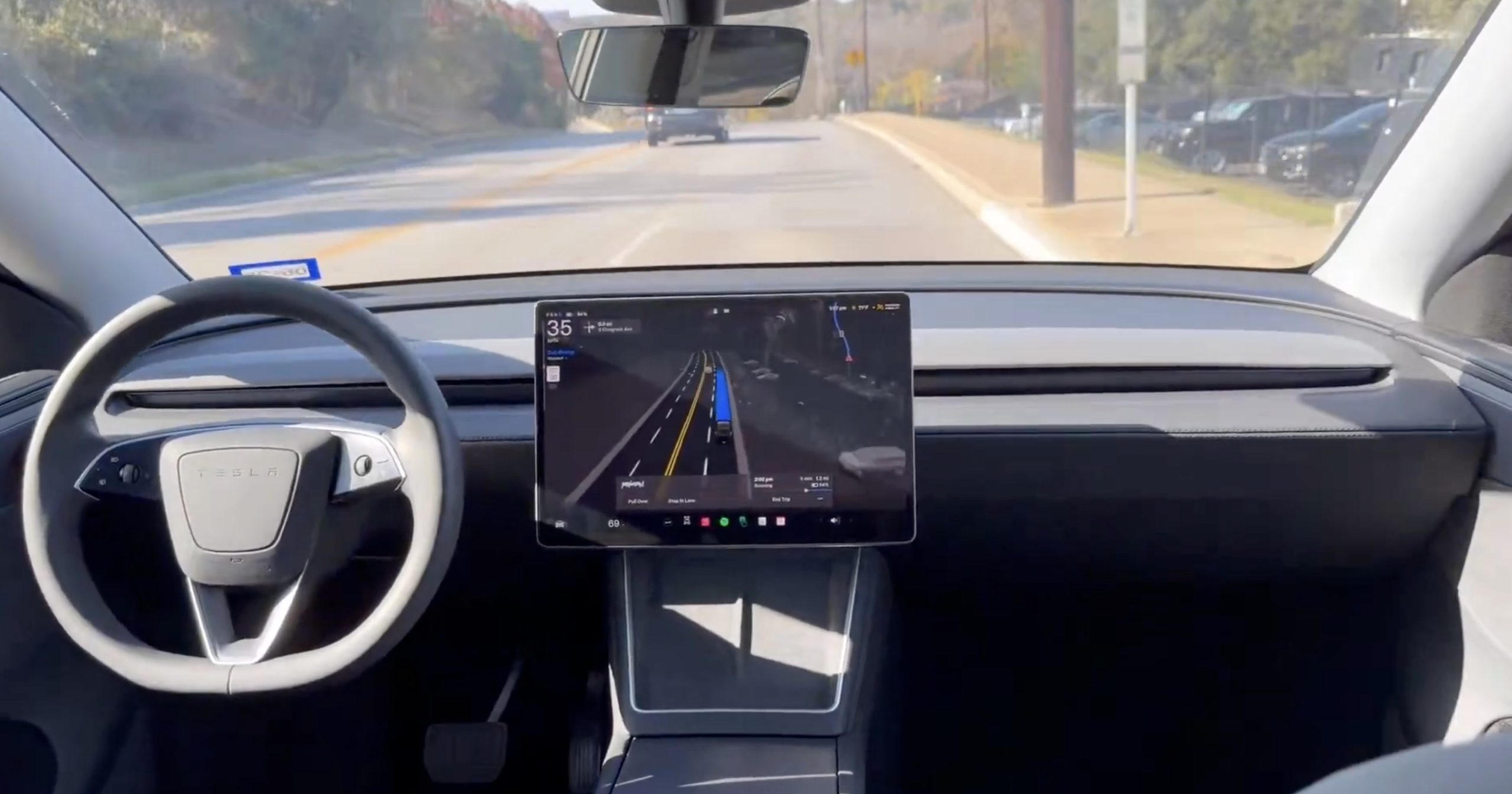
Tesla CEO Elon Musk and AI Director Ashok Elluswamy celebrated Christmas Eve by sharing personal experiences with Robotaxi vehicles that had no safety monitor or occupant in the driver’s seat. Musk described the system’s “perfect driving” around Austin, while Elluswamy posted video from the back seat, calling it “an amazing experience.”
The executives’ unoccupied tests hint at the rapid progress of Tesla’s unsupervised Robotaxi efforts.
Elon and Ashok’s firsthand Robotaxi insights
Prior to Musk and the Tesla AI Director’s posts, sightings of unmanned Teslas navigating public roads were widely shared on social media. One such vehicle was spotted in Austin, Texas, which Elon Musk acknowleged by stating that “Testing is underway with no occupants in the car.”
Based on his Christmas Eve post, Musk seemed to have tested an unmanned Tesla himself. “A Tesla with no safety monitor in the car and me sitting in the passenger seat took me all around Austin on Sunday with perfect driving,” Musk wrote in his post.
Elluswamy responded with a 2-minute video showing himself in the rear of an unmanned Tesla. The video featured the vehicle’s empty front seats, as well as its smooth handling through real-world traffic. He captioned his video with the words, “It’s an amazing experience!”
Towards Unsupervised operations
During an xAI Hackathon earlier this month, Elon Musk mentioned that Tesla owed be removing Safety Monitors from its Robotaxis in Austin in just three weeks. “Unsupervised is pretty much solved at this point. So there will be Tesla Robotaxis operating in Austin with no one in them. Not even anyone in the passenger seat in about three weeks,” he said. Musk echoed similar estimates at the 2025 Annual Shareholder Meeting and the Q3 2025 earnings call.
Considering the insights that were posted Musk and Elluswamy, it does appear that Tesla is working hard towards operating its Robotaxis with no safety monitors. This is quite impressive considering that the service was launched just earlier this year.
Elon Musk
Starlink passes 9 million active customers just weeks after hitting 8 million
The milestone highlights the accelerating growth of Starlink, which has now been adding over 20,000 new users per day.

SpaceX’s Starlink satellite internet service has continued its rapid global expansion, surpassing 9 million active customers just weeks after crossing the 8 million mark.
The milestone highlights the accelerating growth of Starlink, which has now been adding over 20,000 new users per day.
9 million customers
In a post on X, SpaceX stated that Starlink now serves over 9 million active users across 155 countries, territories, and markets. The company reached 8 million customers in early November, meaning it added roughly 1 million subscribers in under seven weeks, or about 21,275 new users on average per day.
“Starlink is connecting more than 9M active customers with high-speed internet across 155 countries, territories, and many other markets,” Starlink wrote in a post on its official X account. SpaceX President Gwynne Shotwell also celebrated the milestone on X. “A huge thank you to all of our customers and congrats to the Starlink team for such an incredible product,” she wrote.
That growth rate reflects both rising demand for broadband in underserved regions and Starlink’s expanding satellite constellation, which now includes more than 9,000 low-Earth-orbit satellites designed to deliver high-speed, low-latency internet worldwide.
Starlink’s momentum
Starlink’s momentum has been building up. SpaceX reported 4.6 million Starlink customers in December 2024, followed by 7 million by August 2025, and 8 million customers in November. Independent data also suggests Starlink usage is rising sharply, with Cloudflare reporting that global web traffic from Starlink users more than doubled in 2025, as noted in an Insider report.
Starlink’s momentum is increasingly tied to SpaceX’s broader financial outlook. Elon Musk has said the satellite network is “by far” the company’s largest revenue driver, and reports suggest SpaceX may be positioning itself for an initial public offering as soon as next year, with valuations estimated as high as $1.5 trillion. Musk has also suggested in the past that Starlink could have its own IPO in the future.
News
NVIDIA Director of Robotics: Tesla FSD v14 is the first AI to pass the “Physical Turing Test”
After testing FSD v14, Fan stated that his experience with FSD felt magical at first, but it soon started to feel like a routine.

NVIDIA Director of Robotics Jim Fan has praised Tesla’s Full Self-Driving (Supervised) v14 as the first AI to pass what he described as a “Physical Turing Test.”
After testing FSD v14, Fan stated that his experience with FSD felt magical at first, but it soon started to feel like a routine. And just like smartphones today, removing it now would “actively hurt.”
Jim Fan’s hands-on FSD v14 impressions
Fan, a leading researcher in embodied AI who is currently solving Physical AI at NVIDIA and spearheading the company’s Project GR00T initiative, noted that he actually was late to the Tesla game. He was, however, one of the first to try out FSD v14.
“I was very late to own a Tesla but among the earliest to try out FSD v14. It’s perhaps the first time I experience an AI that passes the Physical Turing Test: after a long day at work, you press a button, lay back, and couldn’t tell if a neural net or a human drove you home,” Fan wrote in a post on X.
Fan added: “Despite knowing exactly how robot learning works, I still find it magical watching the steering wheel turn by itself. First it feels surreal, next it becomes routine. Then, like the smartphone, taking it away actively hurts. This is how humanity gets rewired and glued to god-like technologies.”
The Physical Turing Test
The original Turing Test was conceived by Alan Turing in 1950, and it was aimed at determining if a machine could exhibit behavior that is equivalent to or indistinguishable from a human. By focusing on text-based conversations, the original Turing Test set a high bar for natural language processing and machine learning.
This test has been passed by today’s large language models. However, the capability to converse in a humanlike manner is a completely different challenge from performing real-world problem-solving or physical interactions. Thus, Fan introduced the Physical Turing Test, which challenges AI systems to demonstrate intelligence through physical actions.
Based on Fan’s comments, Tesla has demonstrated these intelligent physical actions with FSD v14. Elon Musk agreed with the NVIDIA executive, stating in a post on X that with FSD v14, “you can sense the sentience maturing.” Musk also praised Tesla AI, calling it the best “real-world AI” today.
